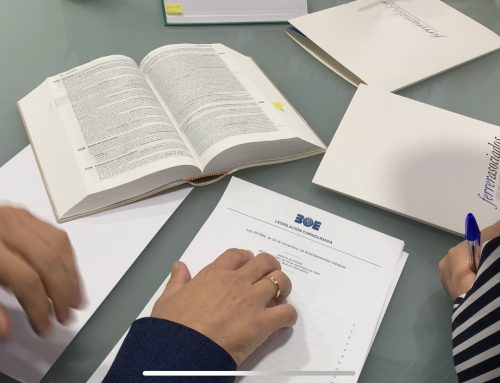The city council “plusvalia” had already been seriously damaged by other rulings of the Constitutional Court, but the most recent one of October 26, 2021 seemed like a death sentence. Will it survive?
This tax –technically known as the Tax on the Increase in the Value of Urban Plots– must be paid when any transmission takes place that shows the existence of an increase in the value of the land. In other words, the increase in value of the entire property is not taxed, but only that of the land, although, obviously, differentiating each one can be complicated. In addition, even if the land increases in value in a certain period of time, you will not have to pay anything unless a transmission takes place. Without going into too much detail, the concept of transmission entails not only a sale, but also free transmissions such as a donation or an inheritance.
The savvy reader with some knowledge of tax matters will realize that this could lead to paying two different taxes for the same increase in value. This is because the personal income tax takes into account capital gains, that is, the net profit obtained from the sale of capital assets –e.g. a property–. In this case, the entire benefit is taxed, so, in theory, you would be paying twice for the part of the land. To avoid this, the amount paid for the city council “plusvalia” can be included as an expense, that is, as an amount that reduces the benefit. This way, the tax to be paid for the total benefit will be reduced by the one already paid for the land.
Having solved the problem of possible double taxation, the true Achilles heel of the city council “plusvalia” has been the calculation method. The tax had been set up in such a way that it was always understood that there had been an increase in the value of the land, regardless of the actual circumstances. This could lead to absurd situations in which a plot had been bought, subsequently sold at an obvious loss, but still had to be paid for the alleged increase. This gave rise to the first judgment of the Constitutional Court that introduced the possibility of demonstrating the non-existence of an increase in value in certain cases. However, the city councils continued to apply the same automated calculation method and it was the taxpayer who had to demonstrate the inexistence of the increase by appealing –except in the few cases of self-calculation of the tax–.
Following the steps set before, the Constitutional Court has now come to say that the way to calculate this increase was totally unconstitutional, so it is not possible that the for the city councils to continue to apply it. In other words, it was not enough to give the possibility of showing that the increase in value was non-existent, because the calculation method was unconstitutional and, therefore, could not continue to be used.
So far so good. However, the ruling has received some criticism due to the extraordinary limitation it has established on the possibilities of appealing the current tax to be paid. It is true that it remains to be seen exactly what consequences it will have, but it seems that the intention has been to prevent appeals as much as possible. It seems that only the taxes that have been notified after the date of the ruling can be appealed. In other words, if a tax had been notified, despite being in time to appeal at the time the judgment was issued, it cannot be appealed based on the Constitutional Court’s ruling.
Despite the fact that the Constitutional Court has tried –it remains to be seen if in an illegal way– to limit appeals as much as possible, what is clear is that the city councils were no longer going to be able to calculate the tax using the same criteria as always. To solve this, the legislator has regulated this matter again with a rule that came into force on November 10. This new regulation once again establishes automatic coefficients, but it also offers the taxpayer the possibility of, at the same time of communicating the transmission, showing the transmission documents that prove the capital increase, if any. Therefore, the taxpayer may demonstrate through, for example, the purchase and sale deeds, that there has been no increase in value, or that the one that has occurred is lower or higher than that which would correspond according to the automatic coefficients.
At the moment, the rule has only set the maximum limit for the coefficients, and each city council must adapt its rules to the new regulations without being able to exceed said maximum. The city councils have a period of 6 months for this, so we shall pay attention to how all this works out.






Stay in contact